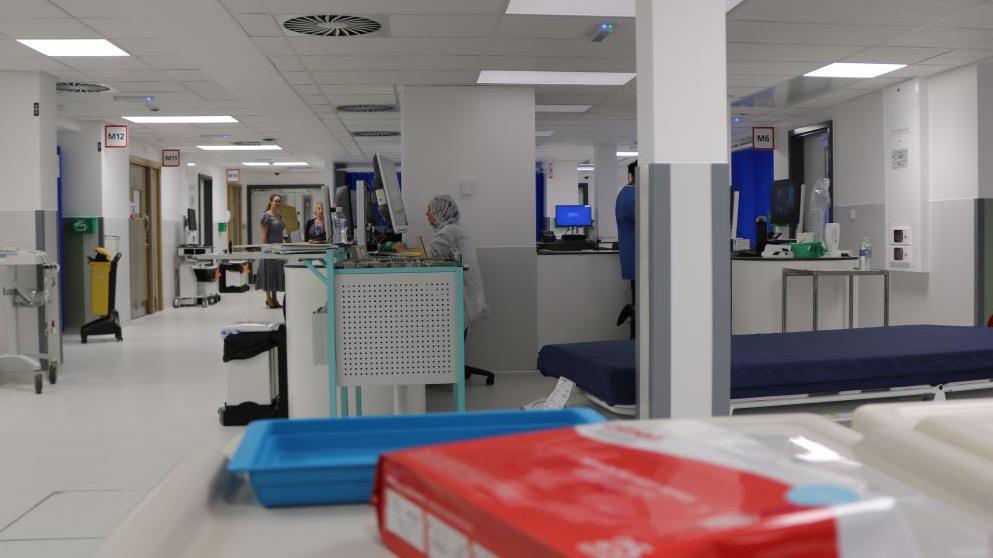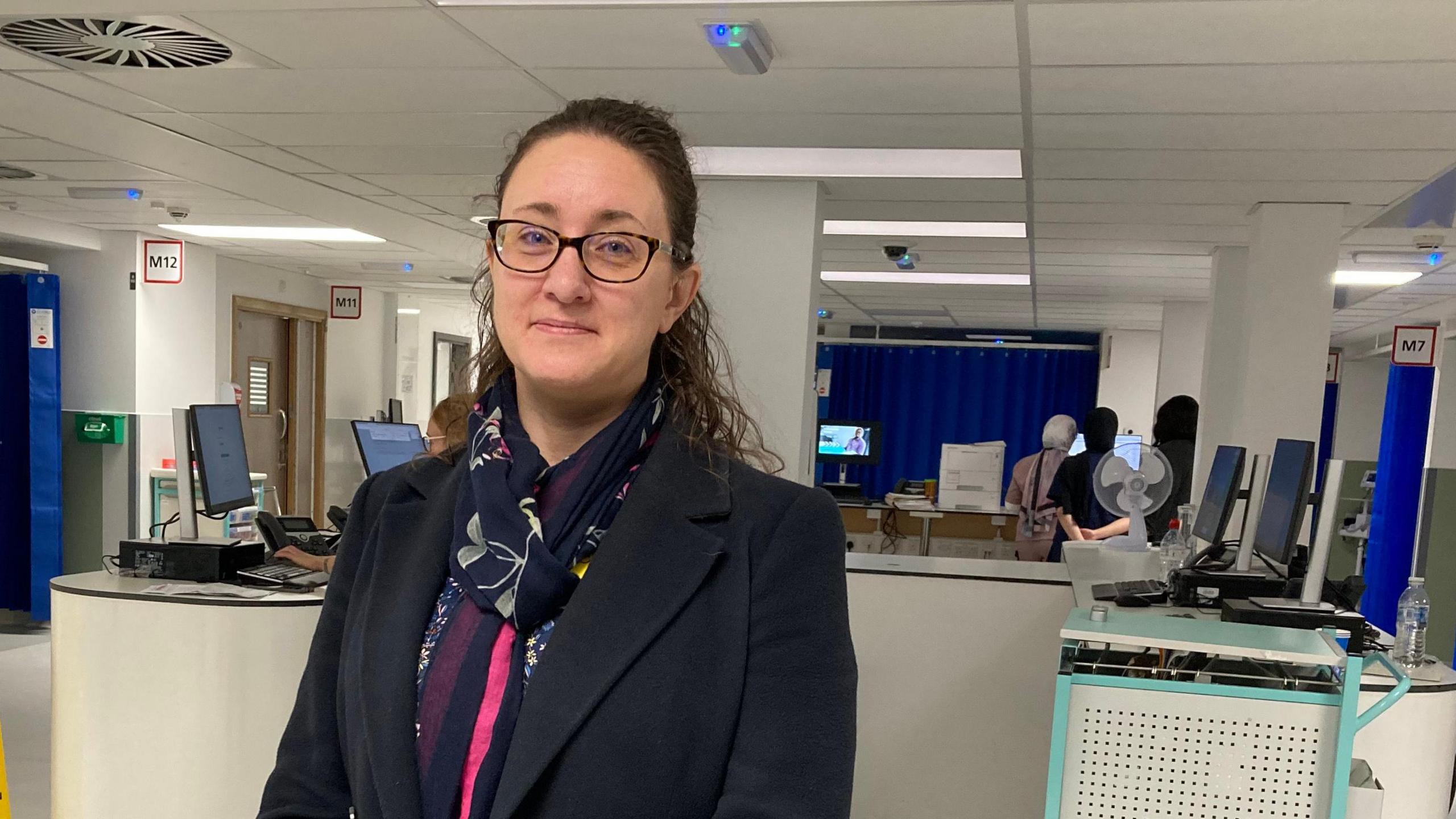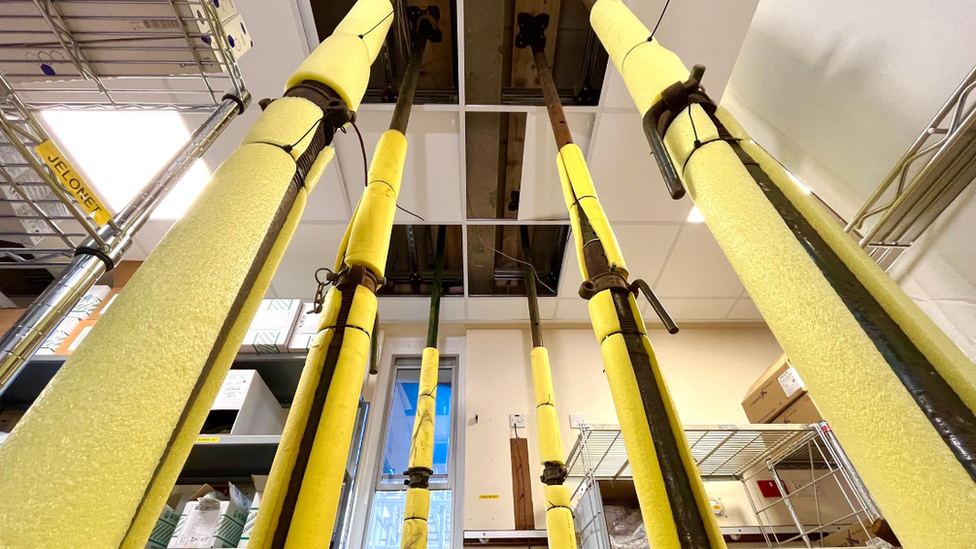Work completed on £2.7m emergency department revamp

The upgraded emergency department at the Queen Elizabeth Hospital has welcomed its first patients
At a glance
A total of £2.7m has been spent upgrading the emergency department at the Queen Elizabeth Hospital (QEH) in King's Lynn
The department treats an average of 220 patients per day, a 50% increase in the last 10 years
The revamped area has additional space for ambulance handovers and dedicated rooms for mental health patients
The QEH is set to be completely rebuilt by 2030 because of the presence of Raac.
- Published
An NHS hospital has spent £2.7m upgrading its emergency department (ED) to help cope with an increase in patients.
The Queen Elizabeth Hospital (QEH) in King's Lynn, Norfolk has created additional space for ambulance handovers and dedicated rooms for mental health patients.
The hospital said its ED treats an average of 220 patients per day, a 50% rise over the past decade.
The QEH is set to be completely rebuilt by 2030, having been constructed using reinforced autoclaved aerated concrete (RAAC).
Dr Sarah Fleming, divisional director of urgent and emergency care at the QEH, said the revamped department was a sign of things to come.
"It has been an expensive project only because we are working with an old building," she said.
"It shows what we can achieve for this hospital and for the people in this region.
"They absolutely deserve a new hospital and that is going ahead, but this just gives you that little bit of a window into what the future holds."

Dr Sarah Fleming says the revamped section of the emergency department will benefit staff and patients
The new-look department features cushioned flooring, brighter lighting and new waiting areas.
The hospital's League of Friends, external donated £100,000 to help buy additional equipment.
The QEH, built in 1980, was constructed out of reinforced autoclaved aerated concrete (RAAC).
The material has a lifespan of around 30 years and is susceptible to structural failure when exposed to moisture.
The QEH is currently being held up by more than 4,000 props to prevent it crumbling further.
Hundreds of schools in England were identified as containing RAAC earlier this year.

The QEH is set to be completely rebuilt by 2030
"We shall be in this building for another seven years," Dr Fleming added.
"So we have to work for what we need to do now with these spaces."
Follow East of England news on Facebook, external, Instagram, external and X, external. Got a story? Email eastofenglandnews@bbc.co.uk, external or WhatsApp us on 0800 169 1830
Related topics
- Published19 September 2023

- Published25 May 2023
